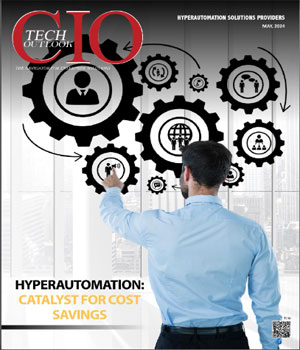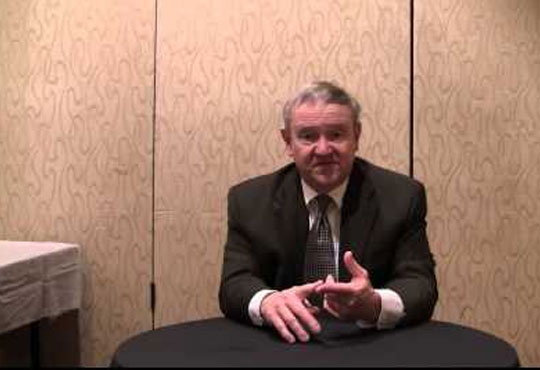
CIOTechOutlook >> Magazine >> December - 2016 issue
ERP - The Key to Transforming Real-Time Analytics into Competitive Advantage
By
 With 25+ years of experience in spearheading ERP Implementation in leading logistics industry, Martin Singaram is presently designated with Valuepro International as Head-IT. He is responsible for understanding and enabling IT security requirements also ensuring the business to achieve its objectives.
With 25+ years of experience in spearheading ERP Implementation in leading logistics industry, Martin Singaram is presently designated with Valuepro International as Head-IT. He is responsible for understanding and enabling IT security requirements also ensuring the business to achieve its objectives.Today’s organizations are having zeal to analyse the data which are captured through ERP and set to get the keys to success. Entire strategy for the company’s forward path is decided by the relevant data analysis. Any presentation in the corporate now not only having pictures in PowerPoint but of the facts and figures derived out of the transactions happened in the system.
None of the corporate wants any meeting that of “can be, may be, could be” to check the failures and history. Now the real time analytics provides what-needs-to-be-done-actions-points proactively and not reactively.
ERP—specifically, cloud-based ERP solutions—can play a critical role in helping decision-makers leverage this real-time data at every stage in the business.
ERP is not a source of recording transactions but became a tool to take decisions on the transactions captured. The increased competition has forced companies to become more agile and find fresh revenue streams, all while reducing costs. To compete globally, all firms must increase their speed, accuracy and productivity to remain profitable.
Advent of cloud computing made all access to data and applications over the internet in real time. Cloud-based ERP systems offer many advantages, including increased data storage, real-time data access, scalability, and reduced costs.
The cloud ERP lets firms access all that big data in real-time anywhere in the supply chain, from the shop floor to the distribution warehouse, allowing every department to react instantly to the changing needs of the business. Logistics Firms can upload orders faster, respond to changing despatch schedules more quickly and manage inventory more efficiently. This improved efficiency helps dynamically manages the transit time and make end customer to have the real time visibility.
Companies are spending less on infrastructure, maintenance, and lifecycle costs by as much 54 percent, thanks to cloud ERP.
Cloud based ERP and Mobile Apps
Mobile applications became a part and parcel of any business now and the entire business of logistics being driven by the mobile application and maps integration with Web application.
Mobile technology allows managers and employees access critical data in real-time over a cell phone or tablet. The field people as and when travel to deliver the goods, the same has been tracked now and over phone real time interactions happening between customer, employee and real time data being updated in system.
A study from The Aberdeen Group found that companies who have already implemented some kind of mobile software into their operations realized a 44 per cent increase in efficiency.
Wearable Devices in Ecom warehouse
Google Glass is a natural forerunner. Glass technology could also serve as potential replacement for old, expensive bar code readers and scanners. This has been applied in the floors of warehouse of Ecommerce companies and pick in the floor is easy and now, the work pressure is being changed to work pleasure.
The integration of cloud ERP and wearable technology is the difference maker here. Equipment operators and other workers on the shop floor will access the live data and transactions through their wearable devices, and the cloud ERP applications will turn this information into actionable intelligence for managers who will be able to make on-the-spot decisions. Once again, efficiency and productivity go up while costs go down.
Predictive analytics
Expected time of Arrival (ETA) for any shipment taken for delivery has been made available to the end user real time in logistics. This predictive analytics put the logistics service provider (LSP) and the end user comfortable in knowing the transit real time.
Now companies are starting to turn to predictive analytics to refine this decision making. One Consumer-packaged-goods (CPG) company mines a massive database of historical point-of-sale and promotions data, integrated with real-time data from social media and weather forecasts, to predict daily demand by store and optimize assortments and promotions in order to maximize sales and profitability.
Now it is possible in ERP to have instant visibility of our sales, purchasing, marketing, finance, HR, warehousing and operations. Visual charts and reports on the key performance indicators that we have chosen. They’ll also give you integrated reporting which makes it easier to identify patterns and trends from all across the business.
CXO Insights
Overhauling IT Security for Third Platform Era
By Sunil Sharma, VP Sales, India and SAARC, Sophos
The Next Wave In Software Engineering After CMM
By Bill Curtis, SVP & Chief Scientist of CAST & Director of the Consortium for IT Software Quality (CISQ)
Analytics in India: Going from Prehistoric to...



